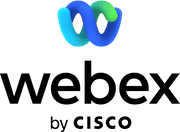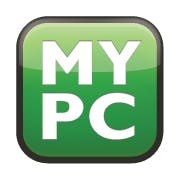In today's fast-paced business environment, remote support software has become a crucial tool for organizations of all sizes. Businesses require a seamless and reliable solution for supporting their clients remotely, regardless of their location or device. Remote support software enables support teams to diagnose and troubleshoot issues remotely, reducing operational costs, and improving response times. With many options available on the market, it can be challenging to select the right solution that fits your needs. In this guide, we will examine key features and benefits to help you make an informed decision on selecting the best remote support software for your business needs.
What is Remote Support Software
Remote support software refers to a set of tools that enable technical teams to provide remote assistance to customers, employees, or partners. Companies use remote support software to solve both hardware and software-related issues from a remote location, saving them the time and cost associated with on-site support. Remote support software allows support teams to take control of a user's desktop or device and troubleshoot any issue in real-time, as if they were working in front of it. Remote support software offers several use cases across industries, including: - Resolving technical issues quickly and efficiently, eliminating the need for on-site visits. - Offering product demos and training sessions remotely. - Increasing productivity and minimizing downtime, by maintaining hardware and software from a central location. - Enhancing customer support by remotely guiding customers through technical issues. Remote support software is commonly used in IT services, healthcare, manufacturing, and customer support services. Companies of all sizes, from small startups to large enterprises, can benefit from using remote support software. It can easily integrate with your existing systems and provide your team with the ability to offer better support and maintain high levels of customer satisfaction.
Benefits of Remote Support Software
Remote support software has become an essential component of running businesses that operate remotely or have distributed teams. This software enables IT support staff to diagnose and troubleshoot computer systems on remote computers and devices, making it a crucial tool for businesses that rely heavily on technology to operate. Here are the main benefits of using remote support software: - Increased productivity: Remote support software enables IT staff to troubleshoot issues on multiple devices simultaneously, reducing their workload and improving the response time for technical issues. - Cost-effective: With remote support software, businesses can reduce the need for on-site IT support and travel, resulting in significant cost savings. - Improved customer satisfaction: With faster issue resolution and reduced downtime, remote support software helps to improve customer satisfaction levels. - Increased Security: Remote support software ensures that sensitive business information is kept secure when technical support staff is resolving issues on remote devices. - Flexibility: With remote support software, IT staff can work from anywhere, as long as they have an internet connection, making it convenient for businesses with remote teams or multiple office locations. In short, remote support software is an essential tool that helps businesses streamline their IT support process, improve productivity, and provide an excellent customer experience. By investing in this software, businesses can save time and money, improve customer satisfaction, and ensure that their business IT systems are secure.
Features of Remote Support Software
Remote support software has become an essential tool in modern business, allowing effective troubleshooting and issue resolution from anywhere in the world via your computer. With so many software options available on the market, it can be difficult to know which one to choose for your business. In this section, we will highlight ten common features that you should look out for when selecting remote support software. 1. Multi-platform compatibility: Compatibility across multiple platforms, including Windows, macOS, and Linux, is crucial for remote support software. It allows you to connect with clients and team members using different operating systems. 2. Fast and secure connections: A reliable remote support software should ensure fast and secure connections, with end-to-end encryption to protect sensitive data. 3. Unattended access: The option for unattended access allows you to access devices remotely, even when clients or team members are not available to provide assistance, allowing for efficient issue resolution. 4. File Transfer: File transfer is an essential feature that allows for the transfer of large files without using external resources or compromising data security. 5. Voice and video chat: This feature allows support personnel to communicate with clients easily, providing real-time support and enhancing the overall customer experience. 6. Mobile support: With an increasing number of businesses adopting mobile devices, it’s essential to look for remote support software that works across a variety of mobile platforms, including iOS and Android. 7. Screen sharing: The ability to share screens between two or more devices is crucial for effective remote support and client collaboration. 8. Scalability: As your business grows, your need for support software will increase. Hence, it’s crucial to select a software that allows for easy scaling as your business expands. 9. Flexible pricing: Remote support software should offer different pricing options depending on the features that you require. This will give you flexibility and help you to control costs. 10. Customized branding: Customized branding helps to improve brand recognition and trust while providing a more personalized client experience. In conclusion, with so many remote support software options available on the market, it's essential to select the one that suits your needs. By focusing on the features above, you'll be better positioned to make an informed decision when choosing the right remote support software for you and your team.
Considerations of Remote Support Software
When it comes to providing remote technical support, having the right software can make a huge difference in the success of your business. The increase of employees working remotely from home or offsite locations has made it essential for organizations to have remote support software integrated into their IT systems. This software allows IT teams to diagnose and solve problems on a user’s device without actually being in the same location as the user. Here are some key factors to consider when choosing the right remote support software for your business: 1. Ease of Use: The software should be easy to install, use, and manage, so that your team can get started quickly and without any hiccups. The user interface should be intuitive and easy to navigate, with clear and concise instructions. 2. Compatibility: The software should be compatible with a wide range of devices and operating systems. This will ensure that your team can provide support to all users, regardless of their device or platform. 3. Security: Remote support software will have access to sensitive data and information whether during the support session or otherwise. The software you choose must offer the highest level of security to protect both your organization and your customers. Encryption of data and multi-factor authentication are essential features to ensure the safety of data. 4. Features: Different remote support software will offer different features. Some features that you should look for include the ability to chat with users during the support session, the ability to transfer files, seamless integration with other software, and prompt notifications for any critical issues. 5. Pricing: The cost of the software is critical for small businesses. Choose a software that provides value for money, with pricing that makes sense for your budget. 6. Customization: Remote support software should be customizable to fit the specific needs of your organization. This will enable your team to personalize the support experience to meet your customer’s expectations and preferences. By taking into account these factors, you can be sure that you'll choose remote support software that is reliable, secure, and easy to use, enabling your IT team to be proactive in their support delivery. These factors will also help your business to provide remote support efficiently, saving time and money, while improving customer satisfaction. Overall, it is important to choose software that fits your business, with features to support your processes and customer demands while aligning with your budget.
Software Trends for Remote Support Software
Remote support software has been a key player in the world of hybrid workplaces, and as companies move forward with their return-to-office plans, the trends are shifting to keep up with evolving needs. One of the most significant trends is a move toward more robust and versatile software solutions that can help support a workforce that may be spread across multiple locations. Companies are also looking for more automation and self-service options to help reduce support costs and streamline their support operations. Additionally, remote support software is increasingly incorporating AI and machine learning capabilities to help improve the speed and accuracy of support interactions, providing customers and employees with quick resolution and higher satisfaction rates. With these trends in mind, it's clear that remote support software will continue to play a critical role in the success of hybrid workplaces in 2023 and beyond.







